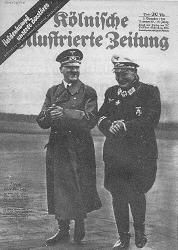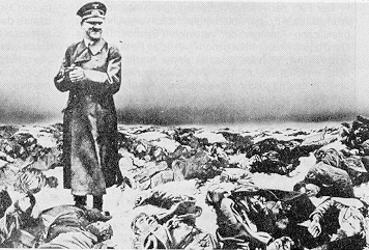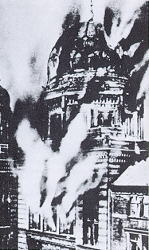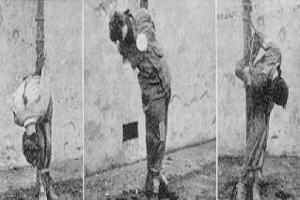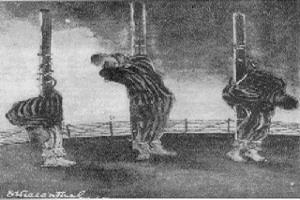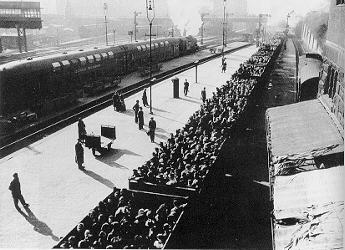.jpg)
The Zündelsite
A Picture Tells a Thousand Words...
Many lies have been told about World War II, always demonizing the German Army and its leaders. Here are just a few of the thousands of fake photographs, clearly manipulated for maximum effect:
This is typical of the brazen forgeries engaged in by the Allies. The original photo of Hitler and Goering appeared on December 5, 1940, 6 months before the invasion of Russia in the German weekly "Kölnische Illustrierte Zeitung.
It appeared again as a photo-montage in the widely circulated book "Pictorial history of W.W.II" by Charles Herridge, Hamlyn publishers, London, New York and Sydney. The captions read: "A mocking German Propaganda photograph shows Hitler gleefully rubbing his hands, inspecting a landscape littered with dead Russian soldiers."
_______
This picture appears frequently as depicting the burning of the Jewish Synagogue at the Oranienburger Street in Berlin 1938 during Kristallnacht.
In fact, it was destroyed in a fire caused byAllied bombs in 1943.
_______
This is how Simon Wiesenthal forged the photo of German soldiers executed by the Americans, as they appeared in Life-Magazine January, 1945.
Wiesenthal published these retouched photos for his book "KZ-Mauthausen" claiming that they showed sadistically tortured and murdered concentration camp inmates. Notice the painted-in striped prison uniforms.
This is one of the frequently repeated, heavily retouched photographs used in Holocaust propaganda books - claiming to show Jews on the way to the "Gas Chamber".
According to the Picture Archives of the German Federal Railway in Hamburg, it shows freight trains filled with German people who have been expelled from the Eastern territories. They are traveling to the Ruhr district, looking for work. The modern train in the background is a double decker passenger train leaving for the town of Lübeck in 1946, one full year after the war!
